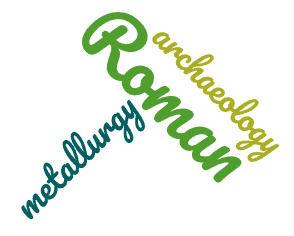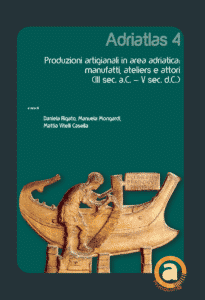UN@ est une plateforme d'édition de livres numériques pour les presses universitaires de Nouvelle-Aquitaine
Auteur : Leonardo Bernardi
Leonardo Bernardi graduated in Archaeological Sciences in 2013 at the University of Padua with a thesis on Roman archaeometallurgy. Achieved the Specialization in Archaeology at the University of Padua in 2016, between 2016 and 2017 he was part of the study team of the Sarno Baths (Pompeii) as part of the strategic project of the University MACH, dealing specifically with archival research and building survey. Between 2017 and 2020 he carried out his PhD research on craft production in the Roman Veneto region, with particular focus on the technological, organisational and economic aspects of metallurgical craft at the University of Padua.
Between 2011 and 2017 he participated in several archaeological excavations in Veneto, Tuscany, Lazio, Campania and Crete.
Bibliographie
BERNARDI L., Roman metallurgical production in the Veneto Region (Northen-Eastern Italy) between town and rural contexts, in Proceedings of the Conference “Divergent Economies in the Roman World. Holistic views on habitual and aberrant practices, ca. 300 BC–AD 300”, (Ghent, 19th-20th November 2020), c.s.
BERNARDI L., BUSANA M.S., The Sarno Baths in Pompeii; context and state of the art, in Journal of Cultural Heritage (JCH), Special Issue 2019.
the-sarno-baths-in-pompeii-context-and-state-of-th
BERNARDI L., BUSANA M.S., CENTOLA V., MARSON C., SBROGIÒ L., The Sarno Baths, Pompeii: architecture development and 3D reconstruction, in Journal of Cultural Heritage (JCH) Special Issue 2019. https://doi.org/10.1016/j.culher.2019.04.011
MONEGO M., PREVIATO C., BERNARDI L, MENIN A., ACHILLI V., Investigating Pompeii: application of 3D geomatic techniques for the study of the Sarno Baths, in Journal of Archaeological Science – Reports (JASREP) 24, 2019, pp. 445-462. https://doi.org/10.1016/j.jasrep.2019.02.009
BUSANA M.S., BERNARDI L., Il ciclo produttivo del ferro: nuove chiavi di lettura degli indicatori di archeologici, in Cavalieri M., Boschetti C. (a cura di), MVLTA PER ÆQVORA. Il polisemico significato della moderna ricerca archeologica. Omaggio a Sara Santoro, 2018, vol. I, pp. 339-432.
BERNARDI L., La fucina romana di Montebelluna, località Posmon (Treviso). Studio dei micro-residui di lavorazione del ferro, in Archeologia Veneta XXXIX, 2016, pp. 122-151.
I dati che vengono qui presentati sono parte di una ricerca di dottorato volto a studiare in particolar modo l’artigianato metallurgico nei sui aspetti tecnologici, organizzativi ed economici. La ricerca ha preso avvio con un censimento di tutti siti editi del territorio veneto che hanno restituito indicatori di attività artigianale inquadrabili cronologicamente fra il II secolo a.C. e il V-VI secolo d.C.




